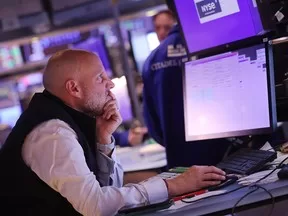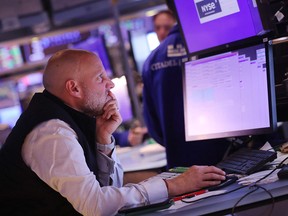Article content
By Parul Garg
High-yield credit spreads this quarter hit a decade-low of 3.05 per cent, reflecting reduced demand for compensation against credit risk, indicating the market’s confidence in low credit risk ahead, but this optimism leaves little room for margins of safety.
Credit spreads serve as a premium offered to investors to offset the risks associated with bankruptcy, and despite robust economic indicators and persistent inflation concerns, the broader market fails to adequately compensate for such risks, offering limited opportunities for risk-adjusted returns.
Article content
The situation reminds us of Benjamin Graham’s observation: “You are neither right nor wrong because the crowd disagrees with you. You are right because your data and reasoning are right.”
Current market sentiment suggests a belief among investors that interest rates may have reached their peak, yet there is growing indication that the United States Federal Reserve will prolong elevated rates to combat inflation since it is targeting a two per cent level.
Article content
Large-cap equity markets are hovering near historic highs, largely influenced by optimism about artificial intelligence, leading to inflated valuations and dwindling risk premiums, particularly in the large-cap U.S. equities now rebranded as the Magnificent Five and in the high-yield indexes.
However, concerns are emerging across various fronts that could potentially spill over into broader markets: political discontent in North America, Europe and elsewhere; soaring government debts; ongoing military conflicts (including those involving major powers) in Ukraine, Haiti, parts of Africa and the Middle East; and competing views on the societal impact of AI.
Article content
Predicting market shifts is always challenging and, therefore, unreliable. Changes often swiftly occur, catching many off guard with their magnitude and impact.
While it seems that we are at a juncture where a market pullback may be imminent, small-to-mid-sized firms may excel regardless. Their attractive valuations, coupled with ongoing earnings growth, position them favourably, despite facing the highest capital scarcity in the market.
As Warren Buffett has said, “Size did us in … For a while, we had an abundance of candidates to evaluate. If I missed one — and I missed plenty — another always came along. Those days are long behind us.”
Berkshire Hathaway Inc. is a US$905-billion enterprise. Moving the needle on performance would require it to buy a mammoth-sized company. The same competition for assets applies to private credit giants, such as Oaktree Capital Management Inc., which, by necessity, cannot consider the secondary market composed of small-to-mid-sized companies due to liquidity restraints.
On the other hand, size is a significant asset for smaller funds that are less dependent on credit cycles and have a much larger opportunity set of small-to-mid-sized capital structures. These could include unrated credits with compelling spreads that are often overlooked by the indexes and larger firms.
Article content
Smaller companies with straightforward capital structures may present significant yield potential and catalysts for growth. For example, in the distressed sector, it is possible to identify opportunities with spreads surpassing 1,000 basis points. Similarly, there are spreads in stressed assets exceeding 600 basis points.
Today, sectors experiencing capital scarcity that have fallen out of favour with investors include health care, biotech, electric vehicles and cannabis. Looking ahead, we believe the next five years hold immense potential for investing in stressed and distressed credits.
Parul Garg is a portfolio manager at Pender Credit Opportunities Fund I.
Share this article in your social network



